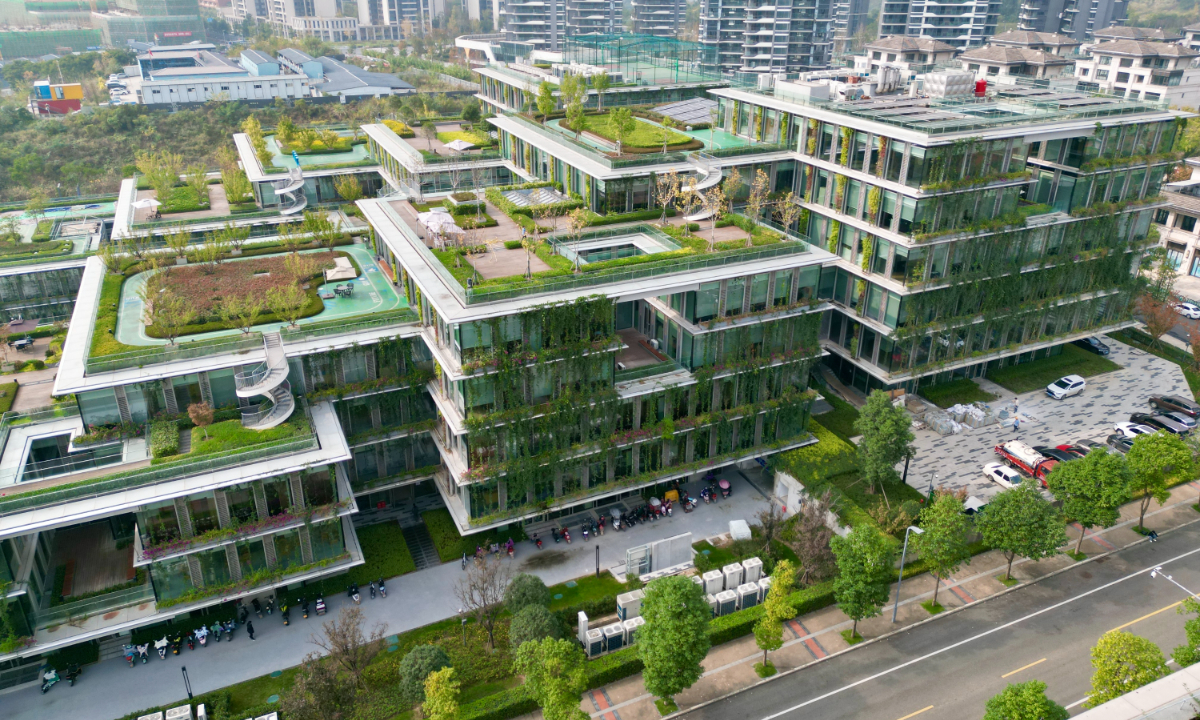
A green energy building with nearly zero-carbon emssions in Chengdu, Southwest China's Sichuan Province Photo: VCG
China's green investment is expected to increase 16 trillion yuan ($2.32 trillion) over the next five years, significantly higher than the growth rate of traditional sectors such as real estate and infrastructure, according to estimates from China International Capital Corporation (CICC) on Saturday.
Financial business related to China's "dual carbon" goals which aim to peak carbon dioxide emissions by 2030 and achieve carbon neutrality before 2060, is developing rapidly, said Huang Zhaohui, chief executive officer of CICC at China Development Forum.
Huang said that China's growth model is shifting from a traditional reliance on real estate and infrastructure to a multi-element model, with green economy and innovation becoming more important in the development of the national economy.
In terms of green bond issuance, China has become the world's second largest issuer in 2021, just behind the US, according to a study by MSCI in 2022.
In terms of green loans, the non-performing rate of green loans has remained under 0.5 percent since 2013 and was as low as 0.3 percent by the end of 2020, much lower than that of public loans of 2 percent, according to CICC.
Huang believes that the capital market could play a bigger role in achieving the country's "dual carbon" goal.
According to CICC, green credit accounts for 90 percent of China's total financing of green finance, while green bonds and green equity only account for 7 percent and 3 percent respectively, a structure which still has room for development and optimization.
Huang predicted that by 2030, the proportion of green credit in green financing will be lowered to 62 percent, and the proportion of green equity will surpass 30 percent, providing a very broad space for the capital market to serve the "dual carbon" goal.
China has introduced a series of policies on green financing development, supporting eligible green enterprises to list on the stock market for financing.
The registration-based listing system, in particular, has opened a huge channel for capital to fund green innovation, Huang said.
"With the registration system, more capital is willing to enter the green economy at the early stage of its development and they can exit smoothly at the time of the initial public offering, forming a positive cycle a good environment for green technology innovation," Huang said.
In its own practice, CICC has invested in more than 450 green and low-carbon projects valued at 25 billion yuan over the past decade.
"Today, these investments have not only promoted low-carbon technology revolution, but also provided good yields," Huang said.
